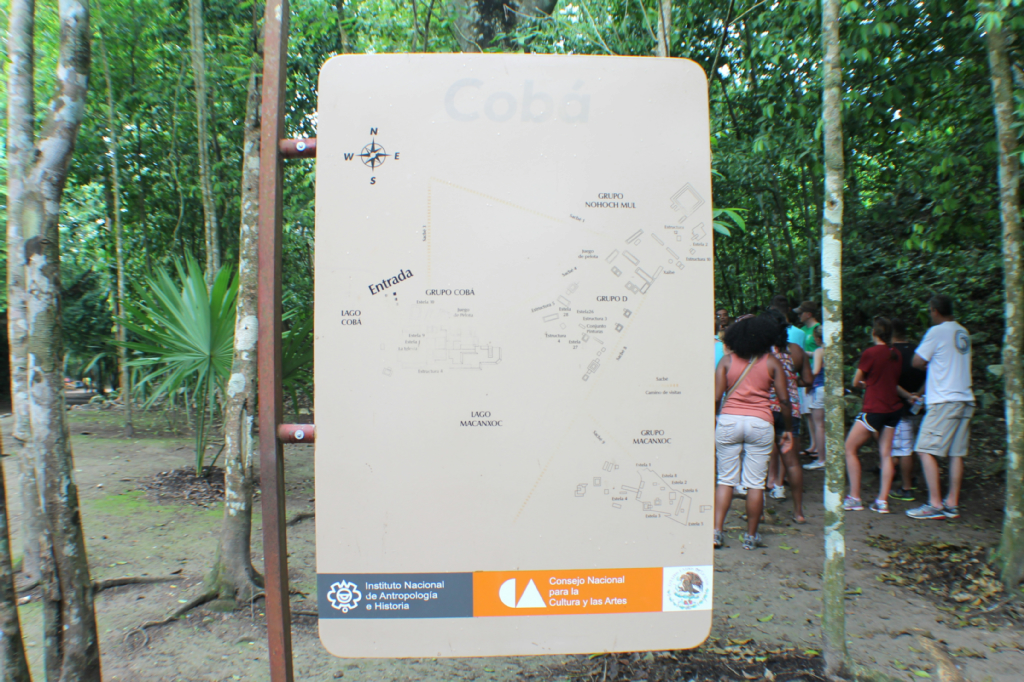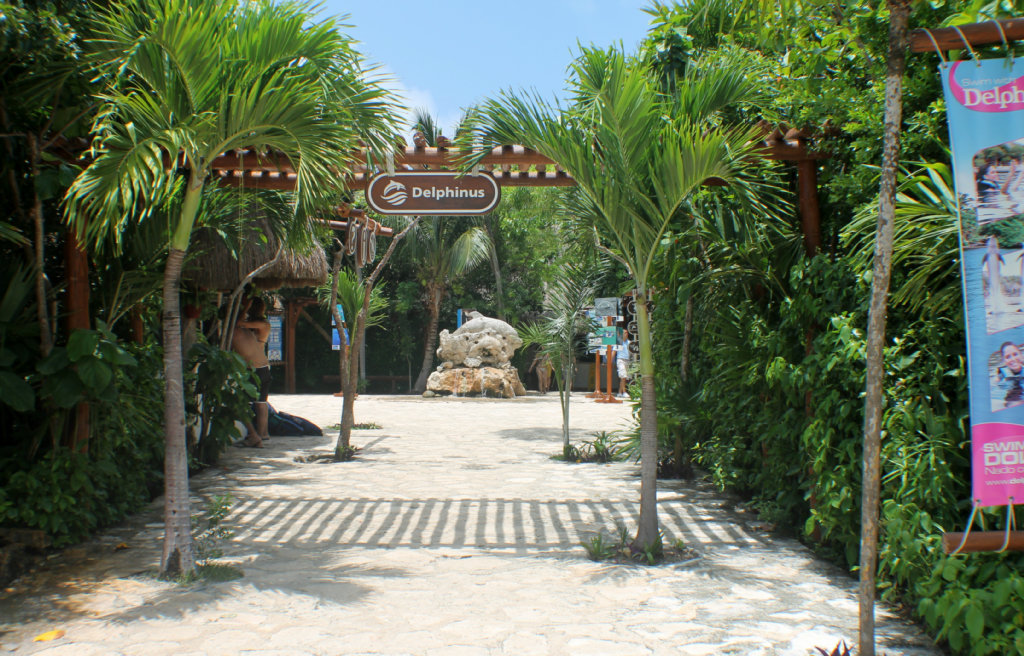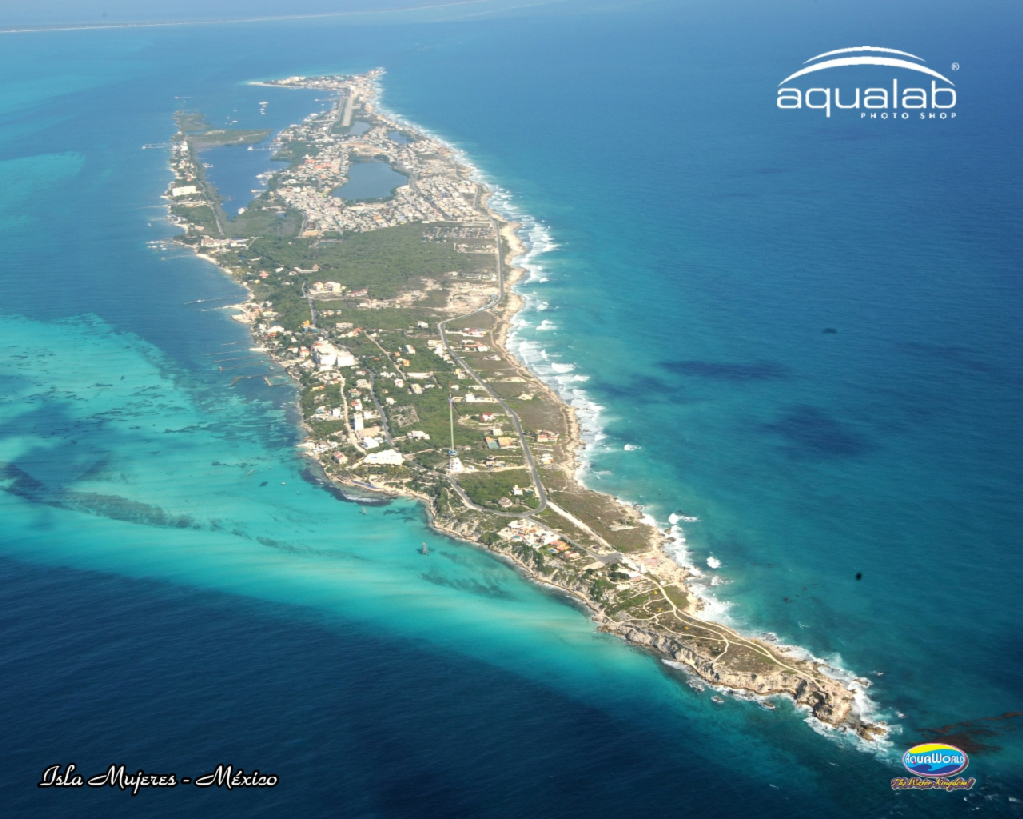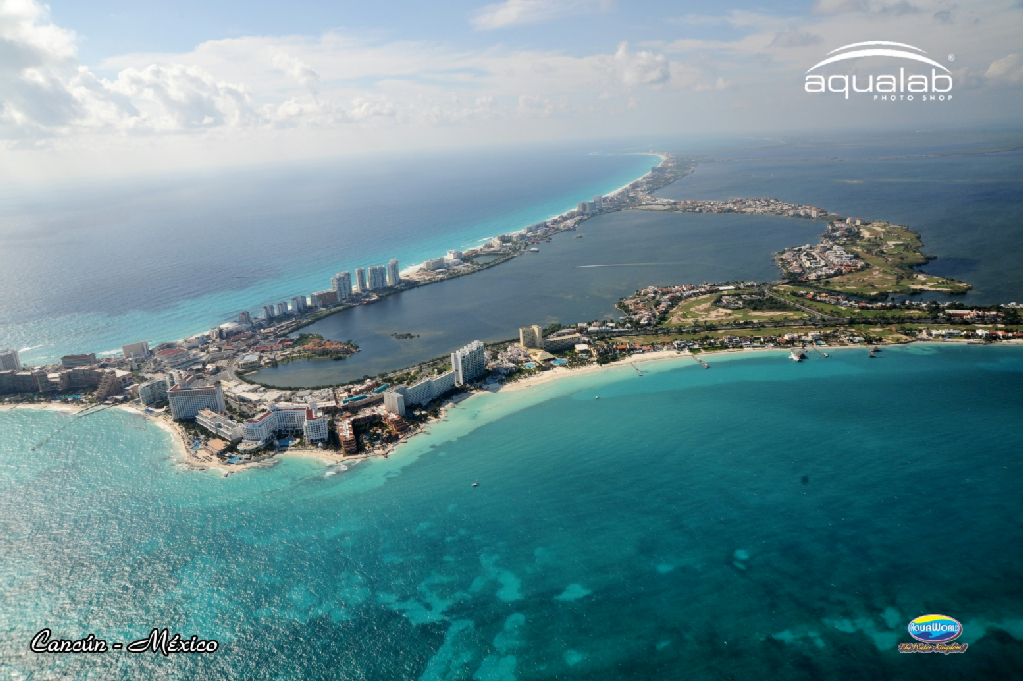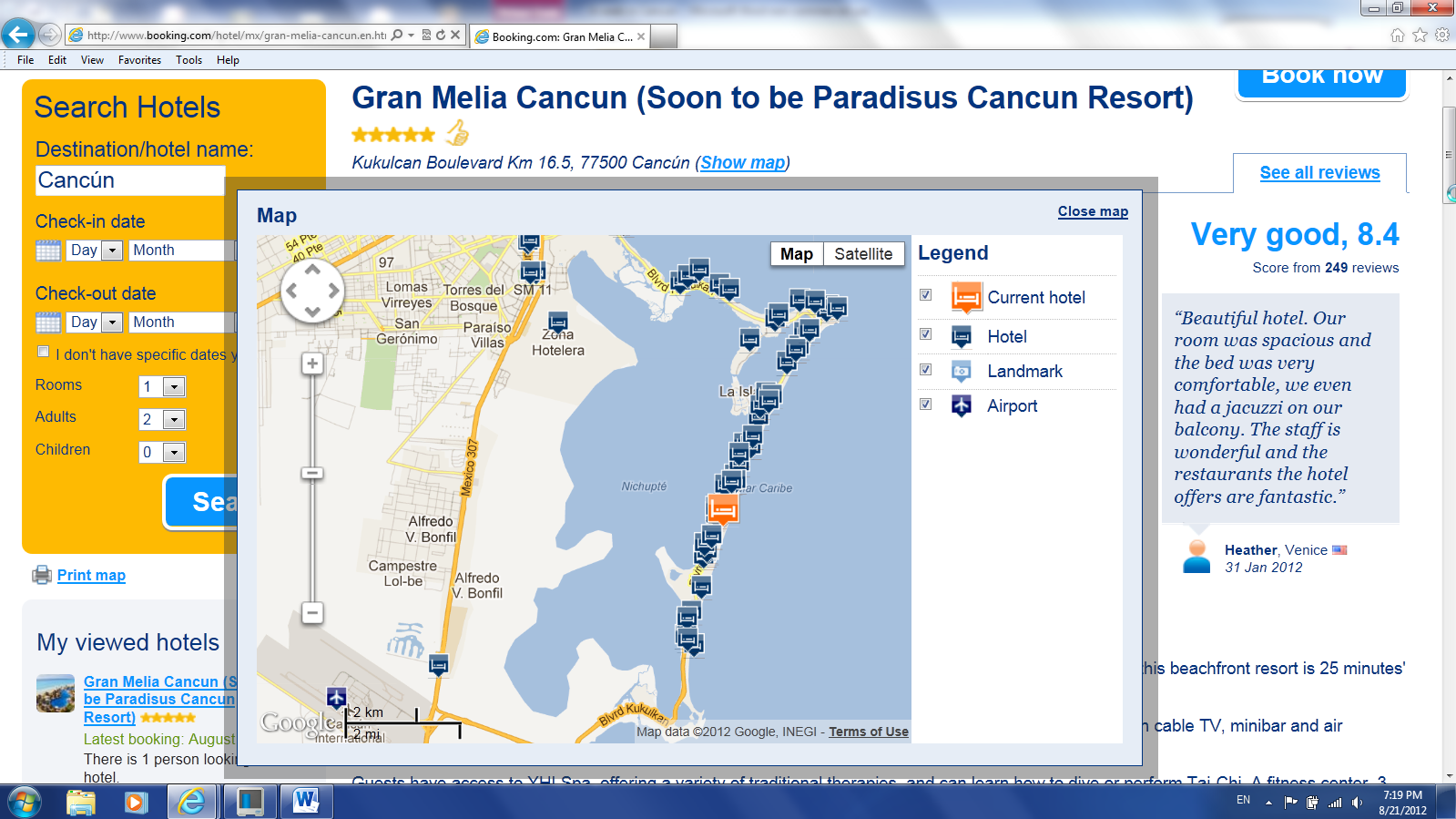In the afternoon our group arrived at the ancient city of Coba, located in the middle of the jungle. The Mayan name Coba means ‘ruffled waters’. It probably refers to the lakes in the area. Coba is located between two lakes and is close to three others. Since surface water is not common in the Yucatan peninsula, it makes sense that the Mayans built their city in an area among lakes. Coba was at one time a very large city spread over 80 square kilometers/30 square miles and was once home to around 50,000 people . Of the 6500 buildings which have been found at Coba only 10% have been excavated. The site was built during the Classic Period (600-900 A.D.), but also experienced a building boom in the Early Post Classic period dated 925 A.D – 1200 A.D. (from wikipedia). Here is Coba site map located right at the entrance.
Archive for the Category » Mexico «
 Early in the morning we were taken by the minivan to experience the Coba Maya Encounter Expedition tour. We were planning to arrive at the authentic Mayan village of Pac-Chen, a self sufficient community of approximately 125 people who still live in round thatch huts deep in the jungle. There’s no electricity or indoor plumbing, and the roads aren’t paved. The inhabitants, who primarily make their living farming pineapples, beans, and plantains, still pray to the gods for good crops.
Early in the morning we were taken by the minivan to experience the Coba Maya Encounter Expedition tour. We were planning to arrive at the authentic Mayan village of Pac-Chen, a self sufficient community of approximately 125 people who still live in round thatch huts deep in the jungle. There’s no electricity or indoor plumbing, and the roads aren’t paved. The inhabitants, who primarily make their living farming pineapples, beans, and plantains, still pray to the gods for good crops.
The first half of the day included:
- Rappelling into a cenote
- Riding a zip-line
- Canoeing
- Lunch in the authentic Mayan village
After lunch the plan was to visit the ancestral city of Coba, an archaeological site hidden deep inside the jungle. It will be in the next post as Part 2 of Cancun Day 3 – Coba Encounter Expedition.
Around 8 o’clock in the morning, Dave and I were picked up at our hotel by a minivan and we were on our way to the aquatic park Xel-Ha, which is located 110 km/68 mi south of Cancun. Xel-Ha is a natural park with an area of 86 hectares/212 acres, which is composed of a group of inlets, lagoons, cenotes and caves. This ecological park is the largest natural aquarium in the world and is an absolutely breathtaking place! We were told that according to the old Mayan legends, Mayan gods driven by their wisdom and love for ”amazing things”, created a place where the most beautiful natural attractions in the Caribbean are all gathered in one place. The ancient Mayans called this area Xel-Ha ”where the water is born”. Upon our arrival we confirmed our time for the dolphin adventure and obtained our locker keys. Here is the entrance to the dolphin area.
Being at the El Embarcadero pier for the Observation Tower, Dave and I decided to take a ferry from there to Isla Mujeres, a small island about 13 kilometers (8.1 mi) northeast of Cancun. The island is some 7 kilometers (4.3 mi) long and 650 meters (2,130 ft) wide (from wikipedia). Isla Mujeres means Island of Women in English. The Spanish named it the Island of Women because when they first discovered the island in 1517, there were hundreds of statues of women along the beach. The statues were a gift to Ixchel, the Mayan goddess of love, fertility and the Moon. See the aerial view of the island below.
Our first day in Cancun we spent enjoying the view of Cancun from the Observation Tower “El Torre” and visiting the neighboring island of Isla Mujeres after that. A little about Cancun. Is Cancun Mexico an island or a city? Cancún is a coastal city in Mexico’s easternmost state, Quintana Roo, on the Yucatán Peninsula. Cancun resort area is bounded on three sides by water: the Caribbean Sea, the Bahia Mujeres (Bay of Women) and the Nichupte and Bojorquez lagoons.
The word cancun translates to a nest of snakes in English. Built in a location that was named by Mayan people, long ago, for the large number of snakes in the area, Cancun has been carefully groomed into one of the most polished resorts anywhere. Long gone are the snakes and most of the mosquitoes that might have enjoyed the numerous lagoons. Few resorts in the world have the infrastructure and amenities that were built into Cancun from the beginning. The area, developed in the 1970s and 80s as a tourist resort, is known for its white-washed buildings, long stretches of sand, diverse shopping, and vibrant nightlife according to wikipedia.
The second week of June Dave and I spent in Cancun, Mexico. At least one of my friends that I know of is going to visit Cancun soon, so I decided to put together our trip to Cancun itinerary. It might be helpful for someone else as well. 🙂 We booked our trip, which included airfare and hotel through expedia.com, since expedia offered non-all-inclusive option. I found booking.com a helpful and informative site for researching. This site provides detailed hotel descriptions, a wonderful interactive map (see screenshot) and reviews. We chose Gran Melia Resort:
